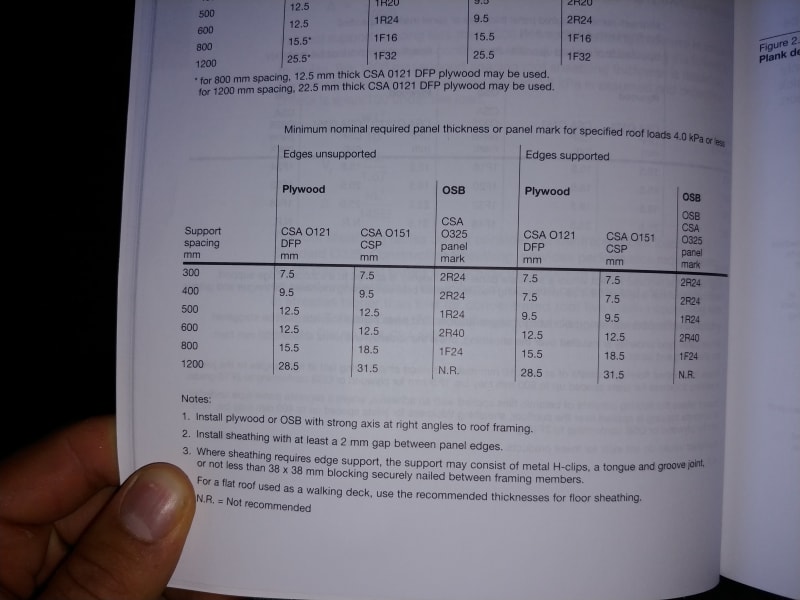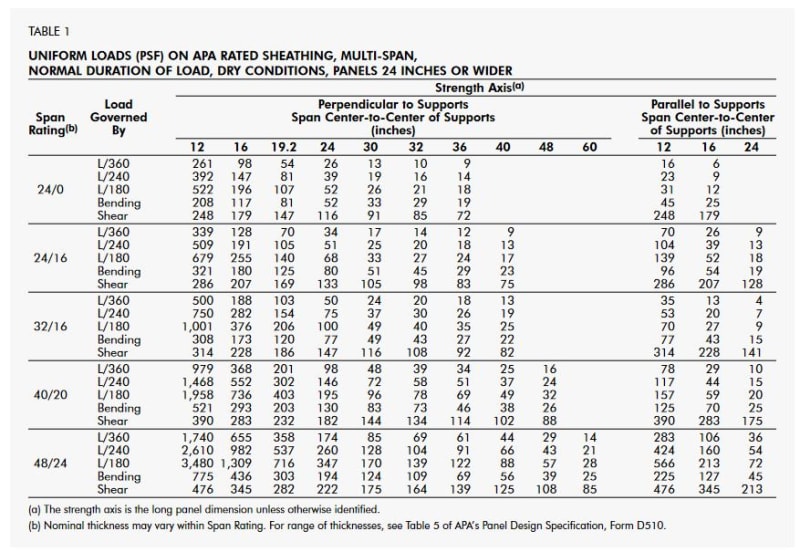skimboard20
Structural
Hi all,
I am designing a building in a high snow load region, and am hung up on sheathing specifications. The roof assembly is typical, with roof sheathing over manufactured roof trusses. Given the snow load of ~80 psf, the truss manufacturer says that trusses @ 24”oc will work. The roof sheathing we typically specify is 1/2" thick plywood, CDX grade, with a span rating of 24/0. But when I check the bending strength of this sheathing (Table 9 in the APA Panel Design Specification), it doesn’t work out. So I have a couple questions:
In this situation, if the architect would like to have trusses at 24”oc, then should the sheathing be designed to that span? Or should the trusses be reduced to 16” spacing so that our typical 1/2" plywood callout works? In short, trusses spaced further apart and thicker sheathing or trusses spaced closer together and thinner sheathing?
How are span ratings derived if it doesn’t seem to work in this case? Are the span ratings based on more typical roof loading scenarios?
Thanks for the help.
I am designing a building in a high snow load region, and am hung up on sheathing specifications. The roof assembly is typical, with roof sheathing over manufactured roof trusses. Given the snow load of ~80 psf, the truss manufacturer says that trusses @ 24”oc will work. The roof sheathing we typically specify is 1/2" thick plywood, CDX grade, with a span rating of 24/0. But when I check the bending strength of this sheathing (Table 9 in the APA Panel Design Specification), it doesn’t work out. So I have a couple questions:
In this situation, if the architect would like to have trusses at 24”oc, then should the sheathing be designed to that span? Or should the trusses be reduced to 16” spacing so that our typical 1/2" plywood callout works? In short, trusses spaced further apart and thicker sheathing or trusses spaced closer together and thinner sheathing?
How are span ratings derived if it doesn’t seem to work in this case? Are the span ratings based on more typical roof loading scenarios?
Thanks for the help.


